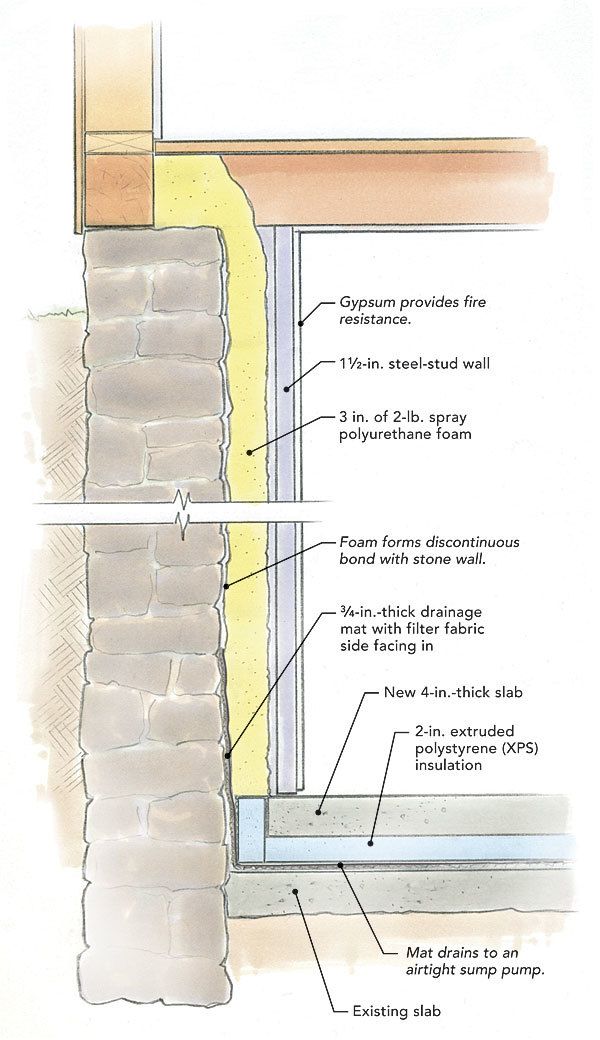Cure for a Leaky Stone Foundation
Building Scientist Joe Lstiburek points out that it's best to address a leaky rubble foundation from the exterior, but he offers some interior water-management options that might better fit frugal homeowners' budgets.

Q:
I have an old house with a full-height basement, but the space is essentially useless because water comes through the stone walls after every rainstorm. I’d love to make use of this extra square footage, if only for storage. Are there any options short of digging up the foundation and doing a major waterproofing job from the outside?
Peter Wright, via email, None
A:
Joseph Lstiburek, Ph.D., P.Eng., an ASHRAE fellow, and a principal of Building Science Corp. in Somerville, Mass., replies: There’s no question that the best way to address a leaky rubble foundation is to do your water management from the exterior: Dig it up, install perimeter drains, and waterproof the walls. Then backfill the space and call it a day. That approach is expensive, though, and it’s more cost-effective to address the problem from the interior.
The first step is to cover the floor with a 3/4-in. polypropylene drainage mat (Enkamat is one example), running it about 14 in. up the wall with the filter fabric facing inward. Then cover the floor with 2 in. of extruded polystyrene (XPS) insulation, turned up at the perimeter, creating a sort of rigid-foam bathtub where a new slab is poured.
Next, cover the walls with 3 in. of closed-cell (2-lb.) spray polyurethane foam. (Repeat after me: This can’t be done with 1/2-lb. foam.) Don’t worry about cleaning the dirt and debris from the rubble before spraying the foam; it’s actually helpful because you don’t want a continuous bond. The idea is that the spray foam sticks to the drainage mat at the bottom of the wall and ties into the floor structure above, but doesn’t fully adhere in the middle. This lets water drain between the spray foam and the stone, where it runs down to the drainage mat and to an airtight sump pump.
The spray foam must be covered for fire resistance, which can be done with a stud wall and drywall to create a finished space, or intumescent paint applied right to the foam for unfinished spaces.
This approach not only eliminates the problem for less than it would cost to waterproof from the exterior, but it also leaves you with a superinsulated basement or crawlspace.


























View Comments
Hi there,
I have a stone foundation with lime mortar and live in zone 6. We experience a lot of freeze thaw. Do you see an issue using this method for the foundation. We have discussed with a spray foam installer and as they suggested keeping the insulation 1’ up the wall from the slab, to warm the base of and allow for moisture drainage. We have no visible signs of running water in our basement, just dampness.